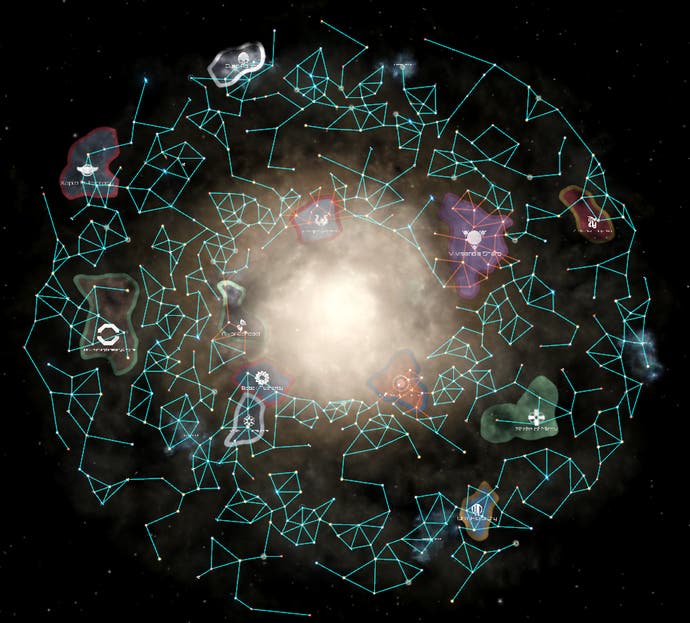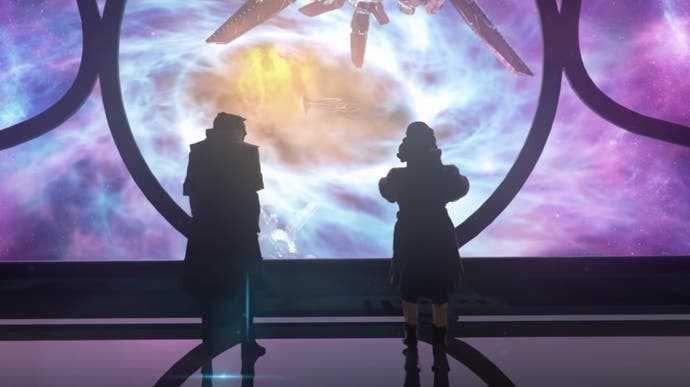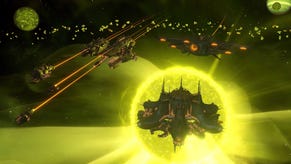Stellaris' next expansion is the "discovery-themed" Distant Stars story pack
Ancient gateways, legendary behemoths, and more!
Publisher Paradox Interactive has announced Distant Stars, a new "discovery-themed" paid DLC story pack for its deep-space strategy extravaganza Stellaris.
Distant Stars will introduce fresh anomalies and storylines, focussed around encounters with "strange new beings in the uncharted depths of space". It will also include surprises "that may help or harm ambitious explorers".
Most notably, valiant adventurers can find and utilise an ancient gateway network that unlocks "a sealed path to a constellation outside our own galaxy". But, asks Paradox, "is this door holding something out, or keeping something in?" Whatever its secrets, speed is of the essence, as other empires across the galaxy are also racing to harness its powers.
Elsewhere, the expansion brings new, unique solar systems with their own stories, and "legendary behemoths" that range from the benign to the considerably more sinister. You can see a few of these mighty beasts in the Distant Stars' announcement trailer above.
In other Stellaris news, Paradox recently unveiled some of the features that players can expect to see once the game's forthcoming 2.1 update, also known as Niven, arrives.
Thankfully, nothing should be quite as divisive as the massive, sweeping changes made to Stellaris' core systems in update 2.0; instead, Niven aims to streamline and finesse a number of existing systems, while introducing a few new features too.
In the former camp, it will soon become impossible to fail anomaly research - an old system which, says Paradox, "added little to the game in terms of interesting choices, and mostly frustrated players". Instead, anomaly research will now require much more time if not undertaken by a scientist with a sufficient skill level.

Hyperlanes, meanwhile, will also get a bit of an overhaul. "Rather than simply attempting to connect stars to nearby stars", explains Paradox, "we've created a new generation algorithm that builds up 'clusters' of stars with a high degree of internal connectivity, that are connected to each other by thinner 'highways' which form natural chokepoints".
The game can now successfully identify these areas, and use this information to improve the AI's defensive decision making, and to avoid implementing frustrating encounters, such as dangerous Leviathans spawning at chokepoints.
Additionally, update 2.1 will introduce new system and star types to create a richer, more interesting galaxy. Players will soon see the likes of Brown Dwarves, Class M red super-giants, and mineral-rich asteroid-heavy systems on their travels, as well as binary and trinary systems in various configurations. These will contain more resources and planets than single-star systems.
"Finally," says Paradox, "there are some new unique systems to find with large amounts of resources in them, guarded by powerful space creatures."
There's no release date yet for either Stellaris' Distant Stars expansion or its 2.1 update, but given the apparent overlap of features, it seems reasonable to expect them to arrive in tandem. As for when that will be, all Paradox is saying right now is "soon".













.png?width=291&height=164&fit=crop&quality=80&format=jpg&auto=webp)




